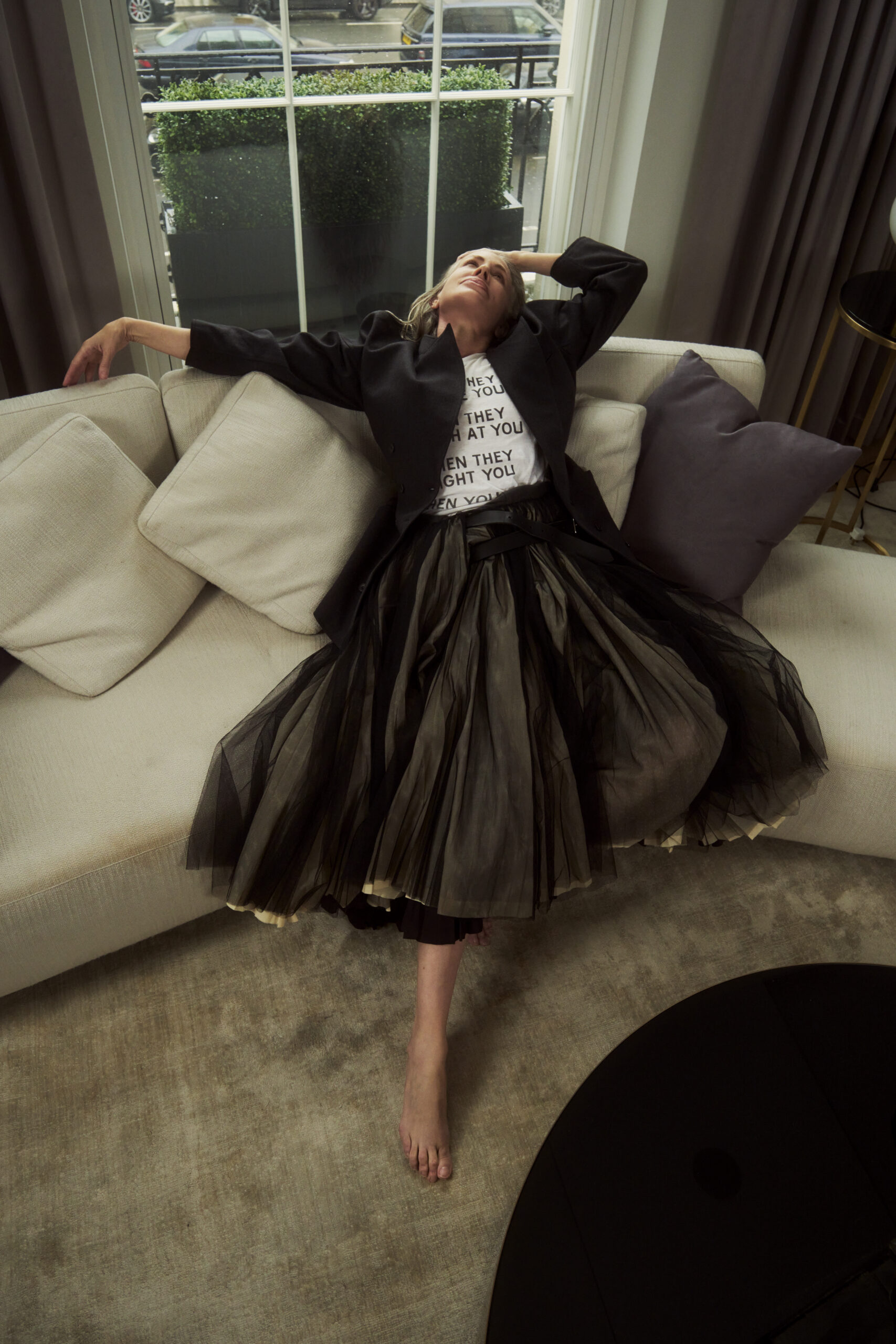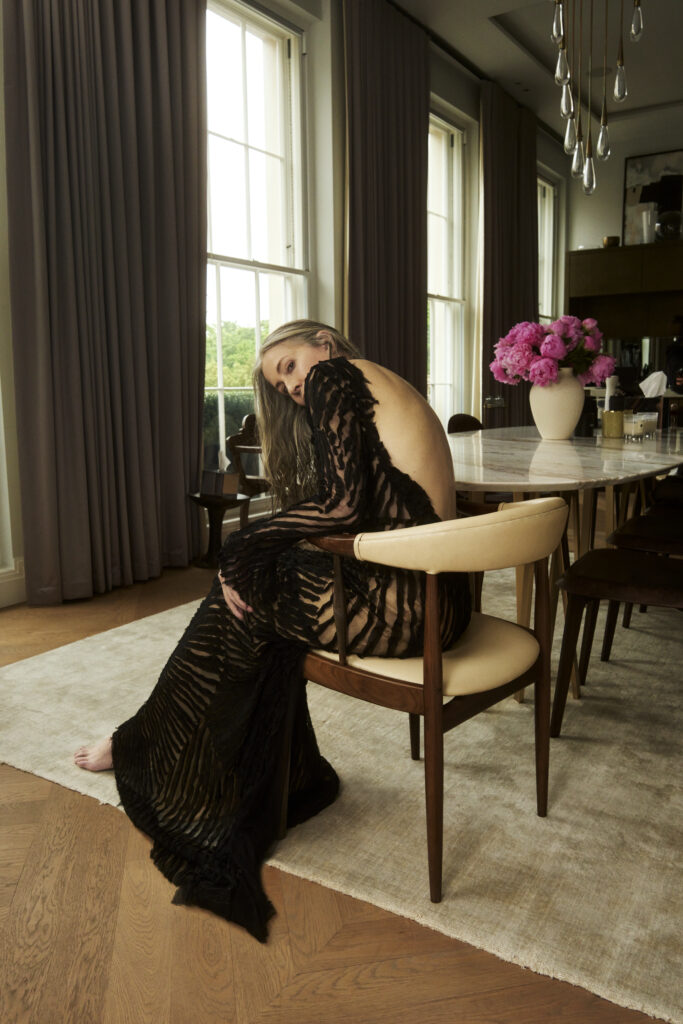Fashion
Carmen Busquets & Byronesque Are Protecting Fashion History, One Archive Piece at a Time – V Magazine

In a world dominated by overconsumption, resale fashion — which is ruled by a “buy it and flip it” philosophy — is killing creativity and the environment. Byronesque, a contemporary vintage boutique, rejects “landfills of imitations” and “outdated nostalgia.” Instead, it seeks to launch a contemporary movement to save vintage fashion.
Carmen Busquets, the Venezuelan entrepreneur who was an angel investor behind some of the industry’s biggest brands and platforms (such as Net-a-Porter and Cult Beauty and now counts Lyst, Moda Operandi, Tagwalk, The Floorr, HEAT, and Psykhe AI in her portfolio), became one of Byronesque’s earliest investors, as she and Byronesque’s founder, Gill Linton, shared the same vision to shape the future of vintage fashion based on creative integrity, ruthless editing, and fearless innovation.
To learn more about how Byronesque came to be, the two masterminds spoke with V about how they fell in love with vintage fashion, and what they hope to see in Byronesque’s future.
V Magazine: How did you first come to hear about Byronesque? What was it about the company that initially drew you in and coming to the conclusion of investing in it?
Carmen Busquets: I have always loved well-curated vintage, so when a friend introduced me to Gill in the winter of 2010 I was intrigued by her unique taste – she is the kind of woman who is able to set a new trend just by wearing a pair of sweatpants! Gill has a great reputation within the industry because of her ability to cut through the noise and I was very inspired by her discerning eye and ability to spot future vintage pieces, it gave me a lot of confidence for Byronesque’s future.
V: What has been your earliest memory with vintage fashion? Do you remember some of the pieces, shows, collections, etc. that made you fall in love with fashion?
CB: I started buying vintage pieces when I was in my early 20s. I found the first things I bought in Paris and they included a beautiful gold Schiaparelli belt, a black Chanel Haute Couture jacket with small pearl buttons, and a Halston dress—it was the late 80s after all.
Gill Linton: I really understood vintage fashion when I moved to NYC in 2000 and my, let’s call it, London look was very different to what was happening in NYC at the time. I couldn’t find things that I wanted in the new life I was creating there. There were a few vintage stores, but they were still very thrifty—it wasn’t at all the luxury business it is now. But that’s when I started mixing up beaten-up things with polished designer pieces so that I wouldn’t blend in with the New York uniform.

V: In what ways do you think vintage fashion informs the current style space?
CB: True vintage is about quality, especially of the ideas and the culture that the pieces were born out of; they tell a story about a particular moment in time. One of the reasons that inspired me to invest in Byronesque was the fact that some of the clients were fashion designers who were buying pieces for research purposes and as inspiration for their future collections. I totally understand why a young designer hungry to create something meaningful may want to study how an iconic piece of fashion was made.
GL: When I launched Byronesque, vintage wasn’t the big, and frankly messy and often ugly, business it is now. Carmen was one of the few people who also knew the shift towards vintage as a luxury ‘brand’ would become what it is today. It’s worth putting into context and remembering that it wasn’t that long ago that it was considered a bad thing for brands to have leftover product and repetitive designs, and now they’re actively re-issuing their archives. We still stand by our claim that ‘just because it’s old doesn’t mean it’s good,’ and the market is essentially a chaotic free-for-all with questionable taste. I’ve written about how taste is a necessary environmental issue because it creates boundaries. Find it on Google: “Only good taste can save us now.”

V: I read that the company is aiming to blur the lines between vintage and future vintage, opting to champion the notion of keeping good pieces in the ether of fashion. What was the intention behind this?
CB: We started the idea of Future Vintage because we can see patterns in style cycles and demand, looking back into contemporary fashion history (we start at punk) to what our clients buy today. A simple concept based on know-how and experience. Now brands are self-appointing themselves as Future Vintage—that’s not how it works—and fast fashion brands are calling their, not so old, clothes vintage. It’s a sham. Fast forward 15-20 years from now, what vintage will we be buying based on today’s style and designs? Doesn’t look as good as the designers’ archives we want today. So, it’s important to preserve the vintage we are buying and should keep for a long time—we don’t subscribe to flip-it culture—as well as guide people to buy wisely from new collections. It’s all future vintage.
V: How do you go about finding independent talent that is up to par with some of the bigger designers and fashion houses we’ve come to know and love?
CB: There’s been a dramatic creative and skills shift from young designers out of the fashion schools these past few years. As an industry, we have a responsibility to support them, because it’s bloody hard. We should also acknowledge the teaching talent in these schools. It’s not hard to see the talent. It’s hard for them to survive. That’s a big problem, and the big houses should care about that more than they do. They are after all their future talent and their future vintage.
V: Where do you hope to see Byronesque in the next five to ten years? Any goals in mind for expansion in ways that would surprise the industry?
CB: In print. And a much-needed thought leader role to bring some order, subculture, and taste principles to the industry.










